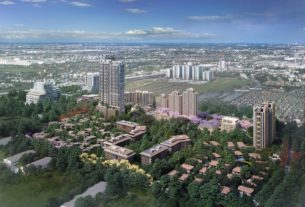Within the next five or six years Thailand could become one of the world’s leading lights in solar power, producing electricity from this renewable energy source at a cost that is either the same or less than buying electricity from a fossil fuel-fired plant.
The government’s progressive energy policies have spawned a major solar power market, as Thai investors and entrepreneurs see the value of the long-term investment in photovoltaic cell systems, which draw on the natural energy of the sun, a completely free and eternal resource.
Just recently, Conergy Renewable Energy commenced construction on a new solar project on behalf of CH Karnchang Co in Nakhon Ratchasima’s Pak Thong Chai district. This 79,000-square-metre project will reduce Thailand’s CO2 emissions by 7,000 tonnes a year and help the country achieve its goal of 25 per cent of power from renewables by 2022.
This is the fourth solar park Conergy has undertaken in Thailand — and all of them are making contributions to society’s energy needs.
The challenge for Thai solar power producers is to achieve grid parity as soon as possible, but this is likely to be delayed because Thai consumers actually enjoy some of the lowest electricity tariffs in Asean.
That said, the government is moving quickly to promote green energy, including solar.
Around the world, one of the major challenges for solar power entrepreneurs and the providers of the technology is to prove that long-term investment will create positive and sustainable returns on what can sometimes be viewed as an intensive initial capital cost.
But in Thailand, many investors are finding rapid success. Thai investors are not only on track to reap healthy profits from solar power installations, but they are also making a massive contribution to the protection of the country’s environment by providing sustainable, safe energy.
The Philippines is on track to achieve grid parity in certain sectors within two to three years, due to a combination of high local electricity rates and the current power supply environment that draws on diesel-based power barges.
Recent reports that Thai authorities are pursuing a policy of feed-in tariffs is a certain way for Thailand to enhance its status as a solar leader in Asean. This policy |shift would allow for rooftop solar panel installations in addition to the currently popular development of solar farms through Power Purchase Agreements (PPA).
PPAs continue to be a tremendous tool to encourage large-scale solar farm development in Thailand. But there is also a massive untapped potential for capturing the Sun’s energy on the rooftops of large buildings on both public and private property. By allowing feed-in tariffs and incentivising rooftop solar installations, Thailand’s National Energy Policy Council could tap this potential – and create jobs and benefits for people in all income brackets.
Thailand is an Asian leader in the development of solar power projects.
Ultimately it is the Thai people who will benefit from the proliferation of solar power sources. The new generation is committed to conserving the environment on all levels, be it eco-cars, reforestation or the use of renewable energy sources and reducing the dependence on fossil fuels.
Thailand deserves credit for its support of solar energy development. And once the country achieves grid parity in the years ahead, Thailand will have achieved a success of which all Thai people can be proud.
L Alexander Lenz is president, Southeast Asia and the Middle East, Conergy Renewable Energy. Conergy has developed three solar park projects in Thailand and provides services for all aspects of solar park investment projects.


